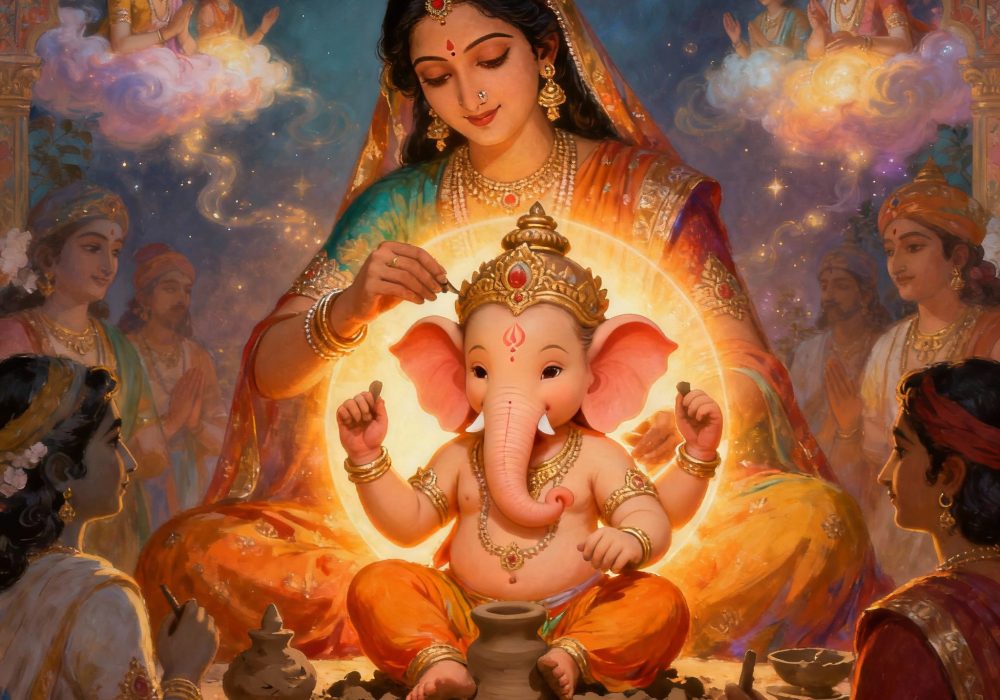
On a sunny morning in a humble village, Goddess Parvati was captivated by the beauty of her own reflection in the water. With a loving gaze, she decided to create a guardian—her son—who would protect her while she bathed. Using turmeric, sandalwood, and her own divine energy, she sculpted a boy from the clay and breathed life into him. She named him Ganesha, the lord of obstacles and remover of difficulties.
Parvati’s joy was immense as she instructed Ganesha to guard the entrance to her home and to allow no one inside. Proud and obedient, Ganesha stood firm, faithfully fulfilling his duty. But soon, Lord Shiva, her husband, returned from the mountains, unaware of Parvati’s new creation. As Shiva moved to enter, Ganesha, following his mother’s command, blocked him. Shiva, furious and puzzled, drew his trident and, in anger, severed Ganesha’s head.
Parvati was devastated to see her little boy fallen. Shiva, realizing his mistake, was filled with regret. To save his beloved son, Shiva sent his soldiers to find a new head. They returned with the head of a mighty elephant, and Shiva placed it on Ganesha’s body, breathing life back into him. From that day, Ganesha became the beloved god of wisdom, prosperity, and new beginnings.
Ganesha’s story teaches us that even mistakes can lead to new blessings, and that true devotion can transcend appearances. His elephant head symbolizes wisdom, strength, and the ability to see beyond the surface.